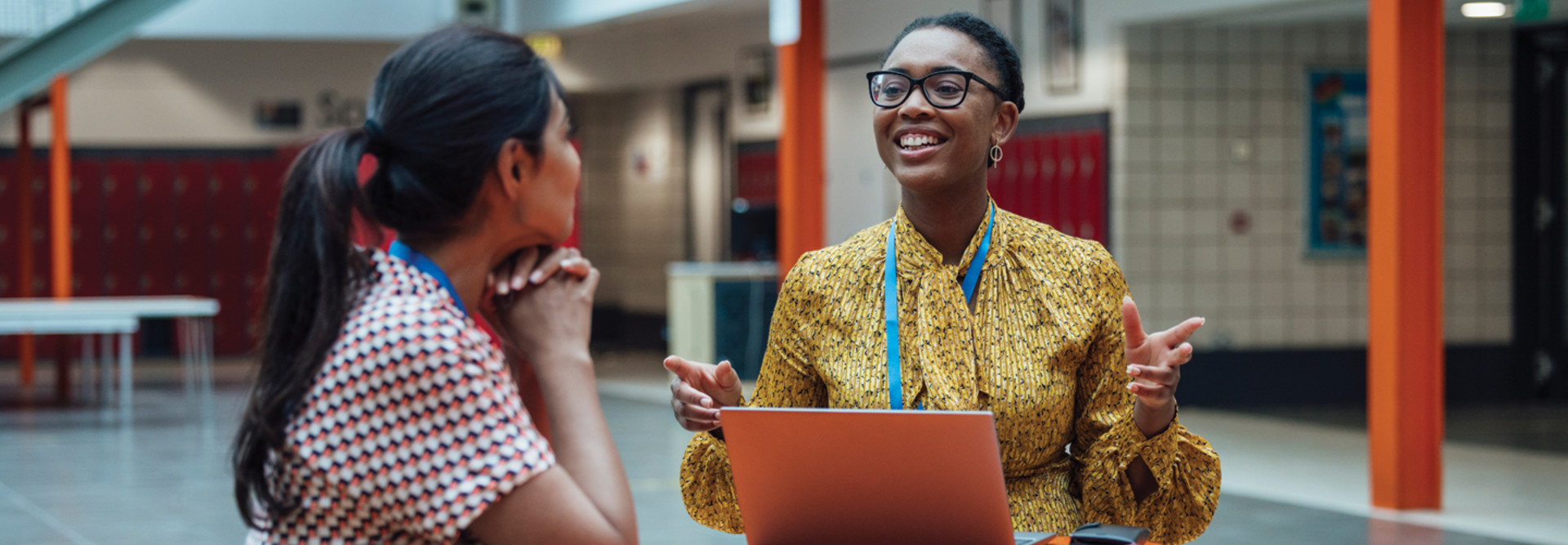Teachers Want Two-Way Technology Communication
Often, K–12 communication about technology starts with district leaders or technology specialists announcing new ed tech, upcoming changes or scheduled outages and ends with teachers listening. That’s it.
To be effective, communication should flow in both directions. Hearing teachers and students, at all grade levels, can lead to powerful changes.
I’ve seen the power of two-way communication firsthand. In my district, we created ways to listen to students’ and teachers’ feedback.
Through that process, students told us that they can’t hear their teachers when they sit in the back of a room. Our team investigated options to give all teachers’ voices a lift — a critical support because 75 percent of teachers nationally say their voices are hoarse and strained at the end of the day.
We explored adding microphones and using headsets in classrooms. Now all classrooms have amplified sound, and feedback shows that students and teachers can hear and be heard.
REVIEW: Lightspeed Redcat’s audio system delivers high-quality classroom sound.
Teachers Need Problem-Solvers, Not Technology Providers
At work, we all want to be professional, but sometimes professional communication can come off as confusing or cold. For IT teams, that can be a big problem. We work with everyone — the superintendent, accounting department, attendance, guidance counselors, teachers, students and sometimes even parents — so we need to be great communicators.
Simple steps, like leaving room to continue a conversation, can help. I make it a habit to end any communication by letting the other party know they can come back to me if a solution isn’t working. By reiterating my commitment to address the issue beyond my initial answer, I show that person that they can count on me. It’s a practice that, when adopted districtwide, could be transformational.
Educators sometimes see IT teams as technology providers, an idea that’s reinforced when technology specialists act as if that’s their entire job. When technology teams become problem-solvers, the dynamic shifts. An IT department’s primary purpose isn’t only to implement tech tools but also to find solutions for students and educators that improve the classroom environment. By redefining the role of IT specialists, IT staffers will be seen as people who care about finding answers.
DISCOVER: Services help schools make the most of their existing workplace solutions.
Tools Are Great, but Some Teachers Have Tech Overload
An IT department’s role isn’t to push as many tools on teachers as possible. Our job is to help them find the right tech to use at the right time.
There are so many great tools available, from tablets and Chromebooks to headsets, styluses and educational apps, but we need to allow teachers to say, “This is too much tech.”
When teachers tell me they are experiencing tech fatigue, I first help them see if there are better ways to integrate technology into their routine. It’s important to know that it’s not about using more or less technology, but about finding solutions that enhance the overall learning and classroom experience.











